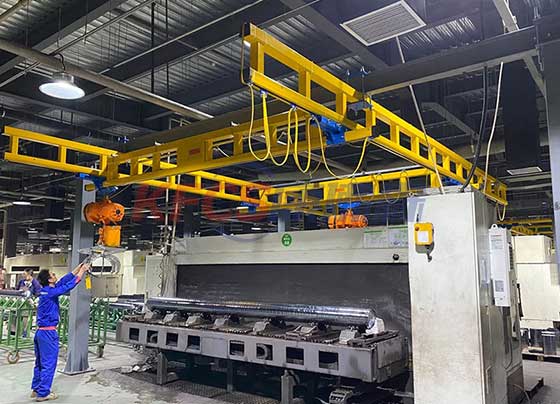Call Us
+86-15201969650

 Deflection: the difference in rail deflection of full load crane of non suspended crane is usually calculated in mm. Generally speaking, Gaobo's design is beam crane L / 450, l support center distance or span.
Beam: the horizontal beam in the supporting structure of the combined self-supporting crane, which is composed of two back-to-back channel steel, and the fixed track is suspended on it.
Total height: the distance from the ground to the crane (including metal parts).
Span (main beam): the distance between the center lines of fixed profile rails. The span must be distinguished from the total length of the main beam, which exceeds the total length. Calculation formula (using pre crane): span = {girder length - (2x girder cantilever length)}
Support Center: refers to the distance between the center lines of two columns or the hangers along the fixed profile rail. The center of support determines what type of profile rail needs to be used.
Supporting structure: for combined self-supporting crane, the supporting structure is a supporting member, also known as portal or terminal frame, which is composed of columns and beams. For a combined crane system, the supporting structure refers to the roof, including truss, longitudinal beam, column, etc. Where the crane is suspended.
Lifting trolley height: for the lifting equipment at the self-supporting point, it refers to the height from the top of the lifting trolley shaft pin (lifting equipment suspended under the shaft pin) to the ground.
Deflection: the difference in rail deflection of full load crane of non suspended crane is usually calculated in mm. Generally speaking, Gaobo's design is beam crane L / 450, l support center distance or span.
Beam: the horizontal beam in the supporting structure of the combined self-supporting crane, which is composed of two back-to-back channel steel, and the fixed track is suspended on it.
Total height: the distance from the ground to the crane (including metal parts).
Span (main beam): the distance between the center lines of fixed profile rails. The span must be distinguished from the total length of the main beam, which exceeds the total length. Calculation formula (using pre crane): span = {girder length - (2x girder cantilever length)}
Support Center: refers to the distance between the center lines of two columns or the hangers along the fixed profile rail. The center of support determines what type of profile rail needs to be used.
Supporting structure: for combined self-supporting crane, the supporting structure is a supporting member, also known as portal or terminal frame, which is composed of columns and beams. For a combined crane system, the supporting structure refers to the roof, including truss, longitudinal beam, column, etc. Where the crane is suspended.
Lifting trolley height: for the lifting equipment at the self-supporting point, it refers to the height from the top of the lifting trolley shaft pin (lifting equipment suspended under the shaft pin) to the ground.